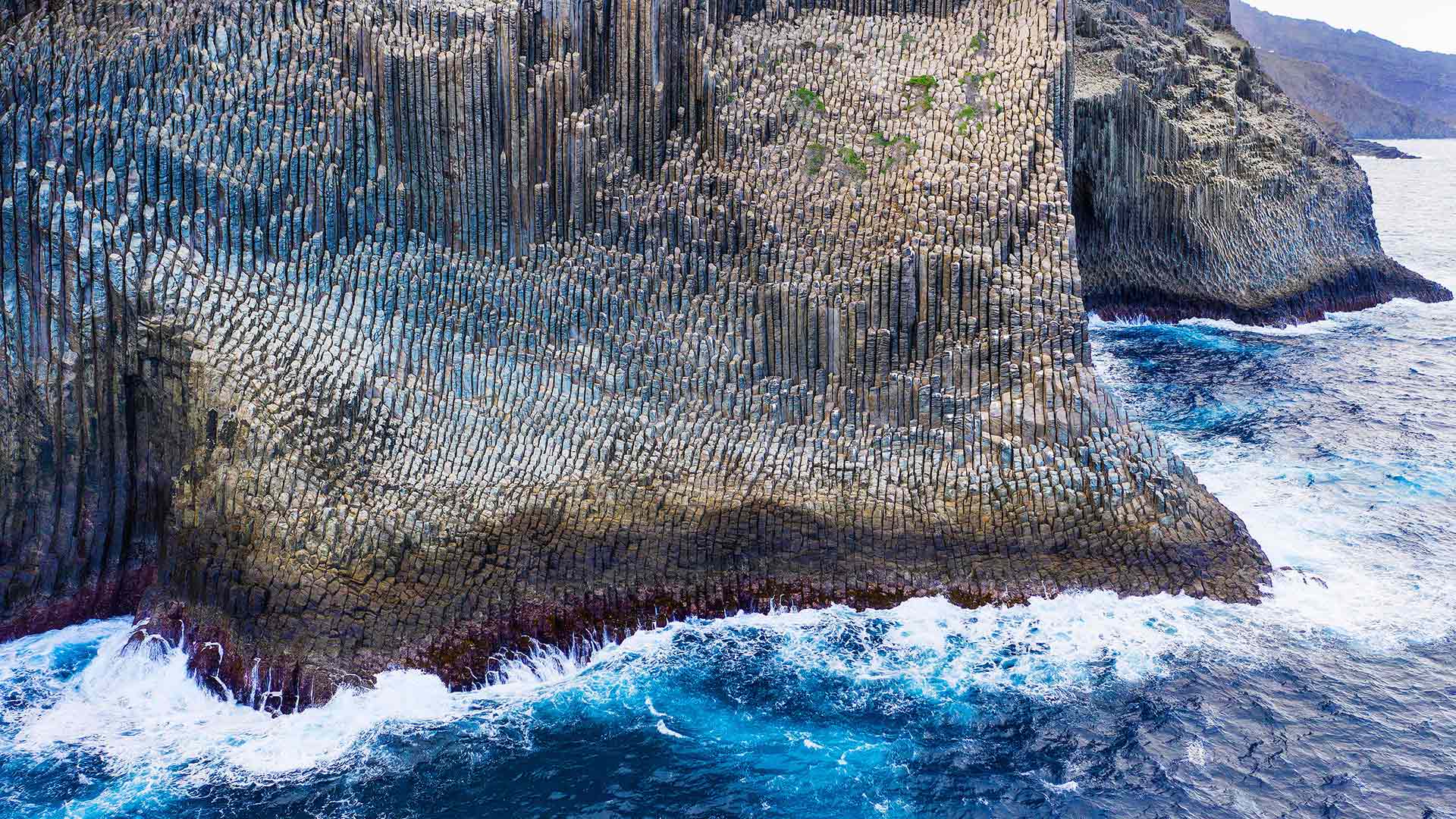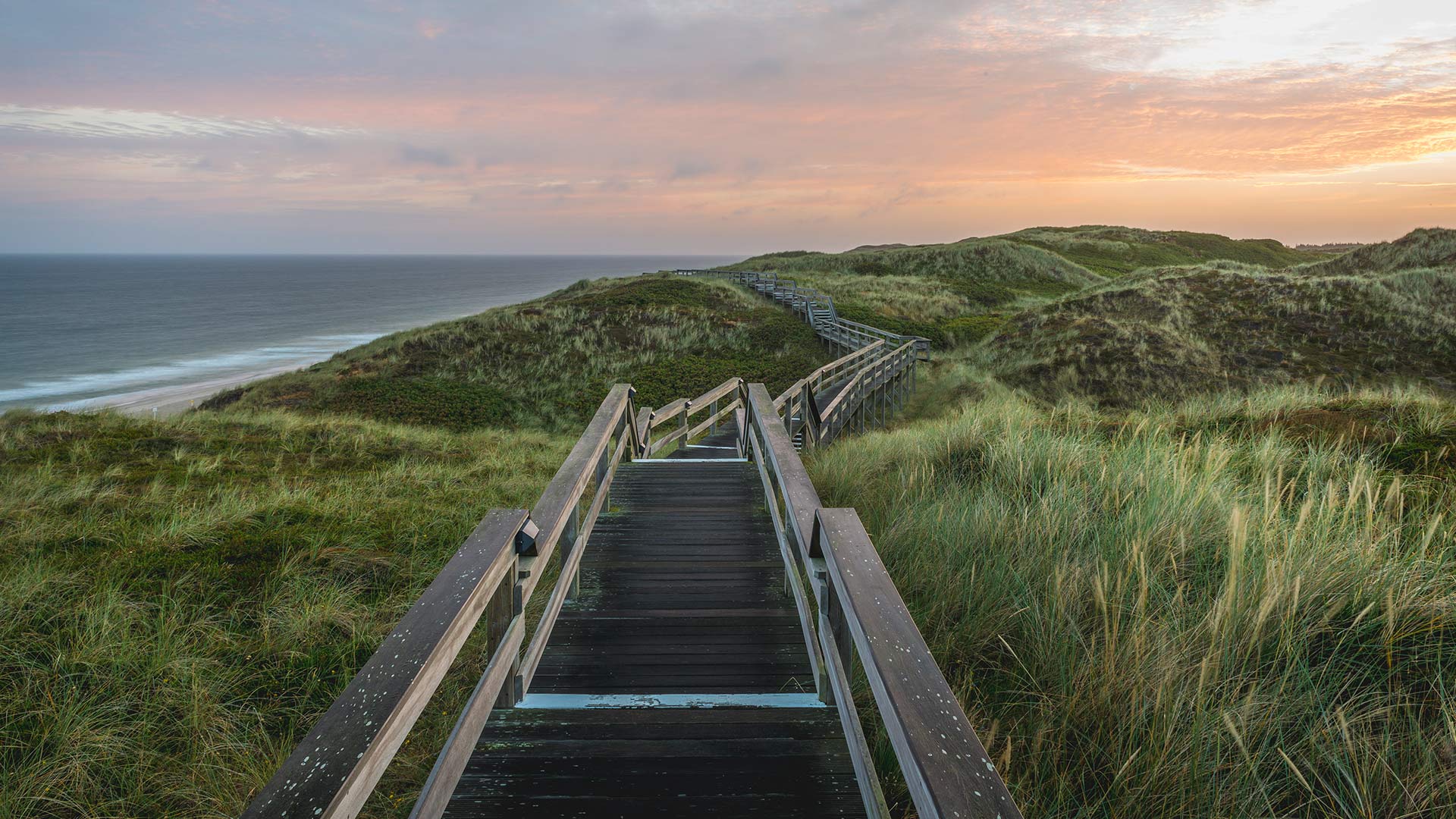2020年8月
鸟瞰戈梅拉岛上管风琴形状的玄武岩,西班牙加那利群岛 (© Martin Siepmann/Image BROKER/Offset by Shutterstock)
通往海滩的木板路,德国叙尔特岛 (© Kerstin Bittner/Westend61/Offset by Shutterstock)
Notojima岛附近的牡蛎养殖场,日本石川县 Oyster farm offshore from Notojima Island, Ishikawa Prefecture, Japan (© divedog/Shutterstock)
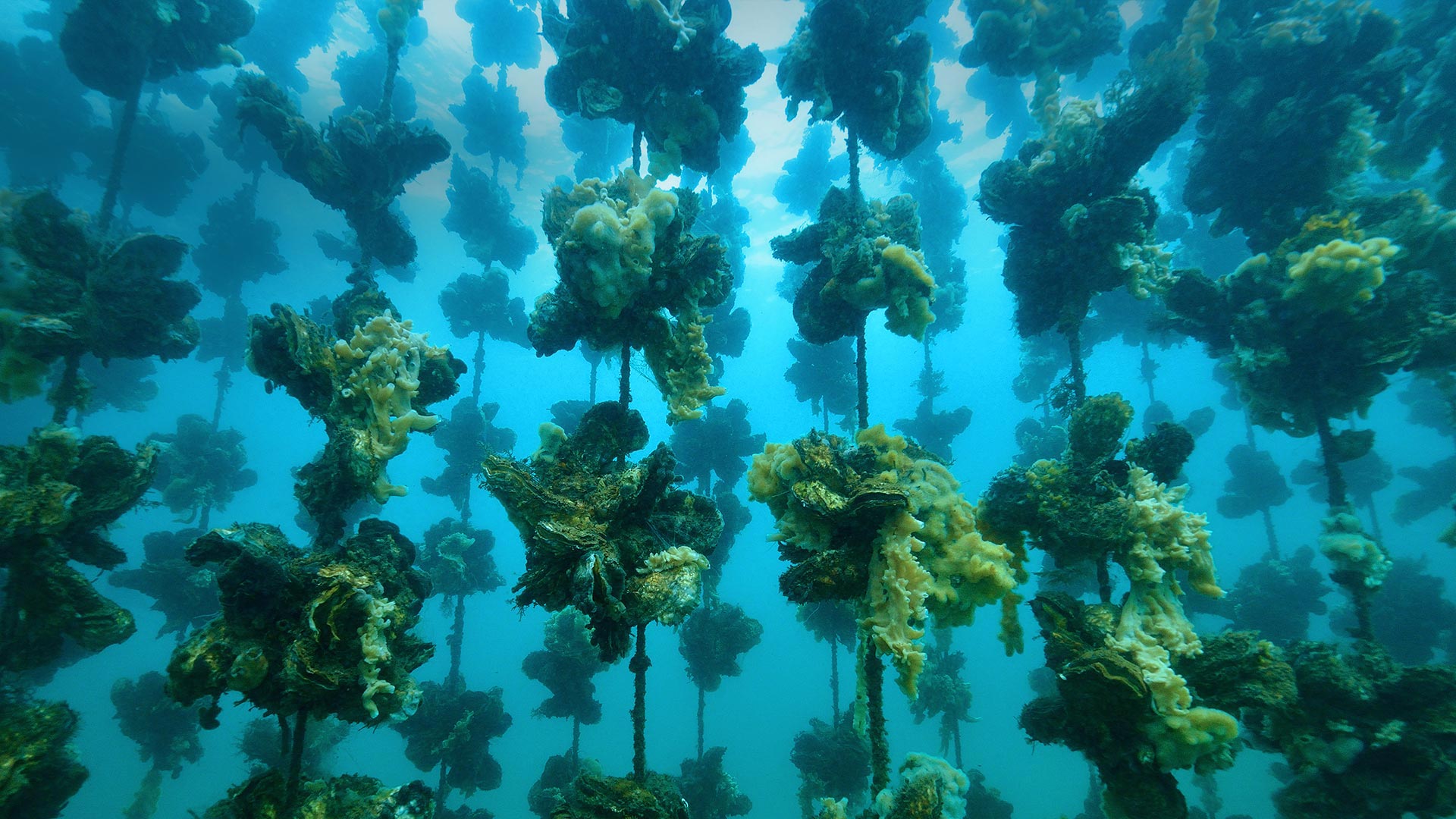
Notojima岛附近的牡蛎养殖场,日本石川县 Oyster farm offshore from Notojima Island, Ishikawa Prefecture, Japan (© divedog/Shutterstock)
Aw shucks, It's Oyster Day
It may look like we've led you into a squishy green minefield, but don't worry, these clustered oysters will only explode with flavor. In honor of Oyster Day, August 5 of each year, we're getting a glimpse of just one method of oyster mariculture, or farming in open seawater. The briny bivalves may be grown on beds, rods, racks, or—in this case—ropes, but the basic process is simple: Growing surfaces are 'seeded' with whole or ground oyster shells before oyster larvae are introduced. The shells attract the larvae, which attach themselves and soon grow into a new layer of mature oysters. Humans have been doing this at least since the days of ancient Rome, but wild-picked oysters have been an important food source to many cultures since prehistory.
Oysters also played an important role in US history, and could impact the future of our biggest city: Until the 1800s, New York Harbor was home to a trillion or more oysters, possibly half the world's supply. Naturally growing on craggy, reeflike beds on the harbor floor, they formed strong barriers against swelling storms. By the 20th century, overharvesting and pollution had decimated New York's oyster population. When Hurricane Sandy hit the NYC region in 2012, it highlighted the city's vulnerability to extreme weather, especially as ocean levels continue to rise. Since then, initiatives have aimed to seed new beds with oyster shells, many collected from local restaurants.
图森北部托托利塔山麓上空的雷暴,亚利桑那州索诺拉沙漠 Lightning storm in the Tortolita Mountain foothills, north of Tucson, Arizona, in the Sonoran Desert (© Jack Dykinga/Minden Pictures)
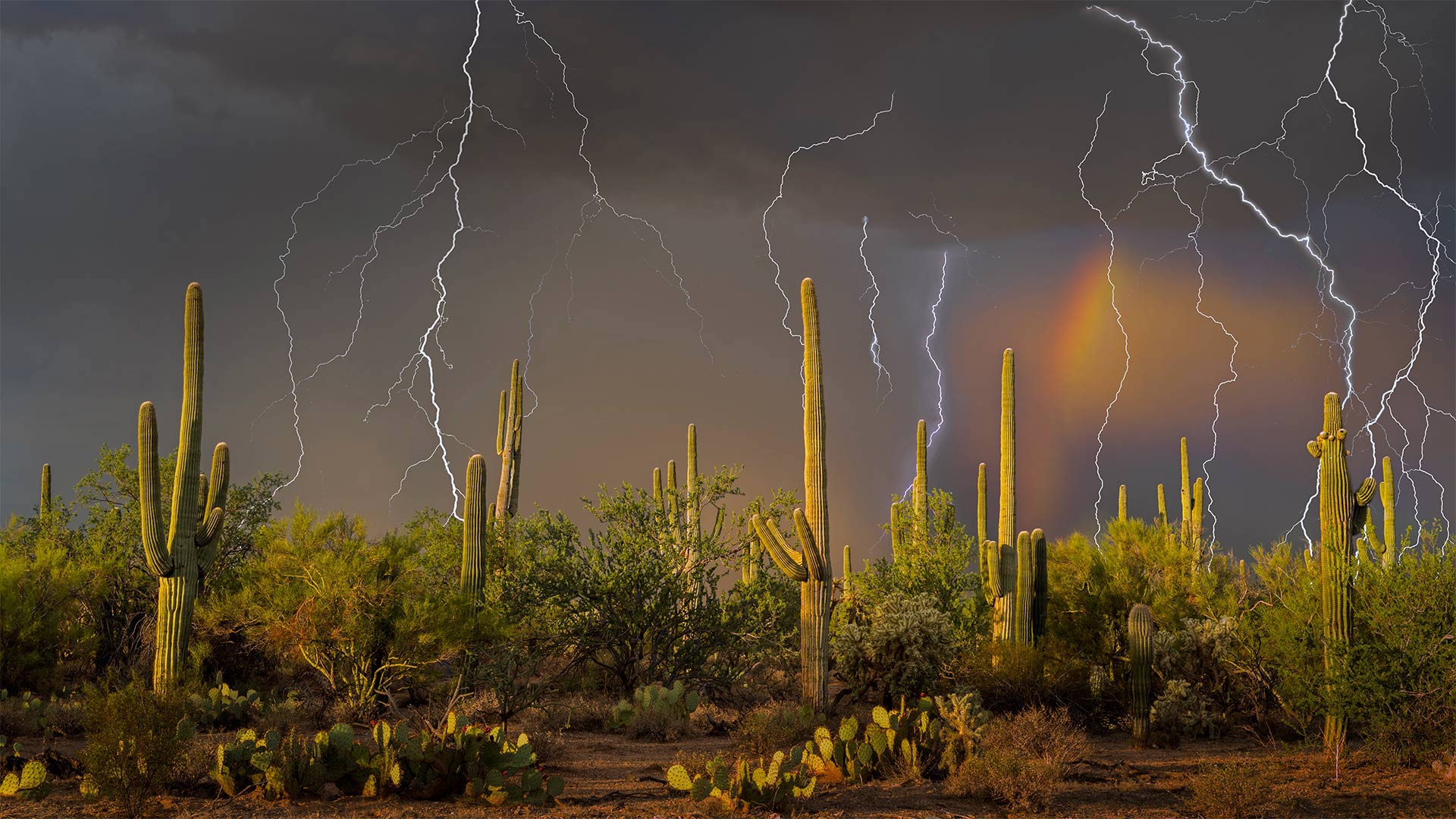
图森北部托托利塔山麓上空的雷暴,亚利桑那州索诺拉沙漠 Lightning storm in the Tortolita Mountain foothills, north of Tucson, Arizona, in the Sonoran Desert (© Jack Dykinga/Minden Pictures)
The monsoon arrives in the desert
Lightning strikes are common during the summer monsoon of the American Southwest. In Arizona and New Mexico, powerful thunderstorms roll in most every afternoon from early July until mid-September. Here, in the Sonoran Desert north of Tucson, Arizona, the severe weather over the saguaro cactus makes for a dramatic scene.
The monsoon–which refers to the entire season and not just a single storm—is caused by intense daytime heat, which drives shifts in wind patterns that bring moist air to the generally arid Southwest. Mornings typically begin fair, but as temperatures rise throughout the day, precipitation gathers into clouds that finally burst in periods of heavy rain during the late afternoon and evening. The monsoon storms also bring huge dust storms called 'haboobs,' borrowing the name from similar storms in Sudan.
In Arizona, the monsoon can account for nearly half the state's annual rainfall, which averages little more than 7 inches. Water is precious in the desert, and the region relies on this weather pattern to fill reservoirs and maintain the fragile ecosystem. While dry lightning early in the season can spark wildfires, as the monsoon rain starts to fall, it helps reduce local fire danger.
马焦雷湖畔的贝拉岛 ,意大利皮埃蒙特 Isola Bella, Lake Maggiore, Piedmont, Italy (© Massimo Ripani/eStock Photo)
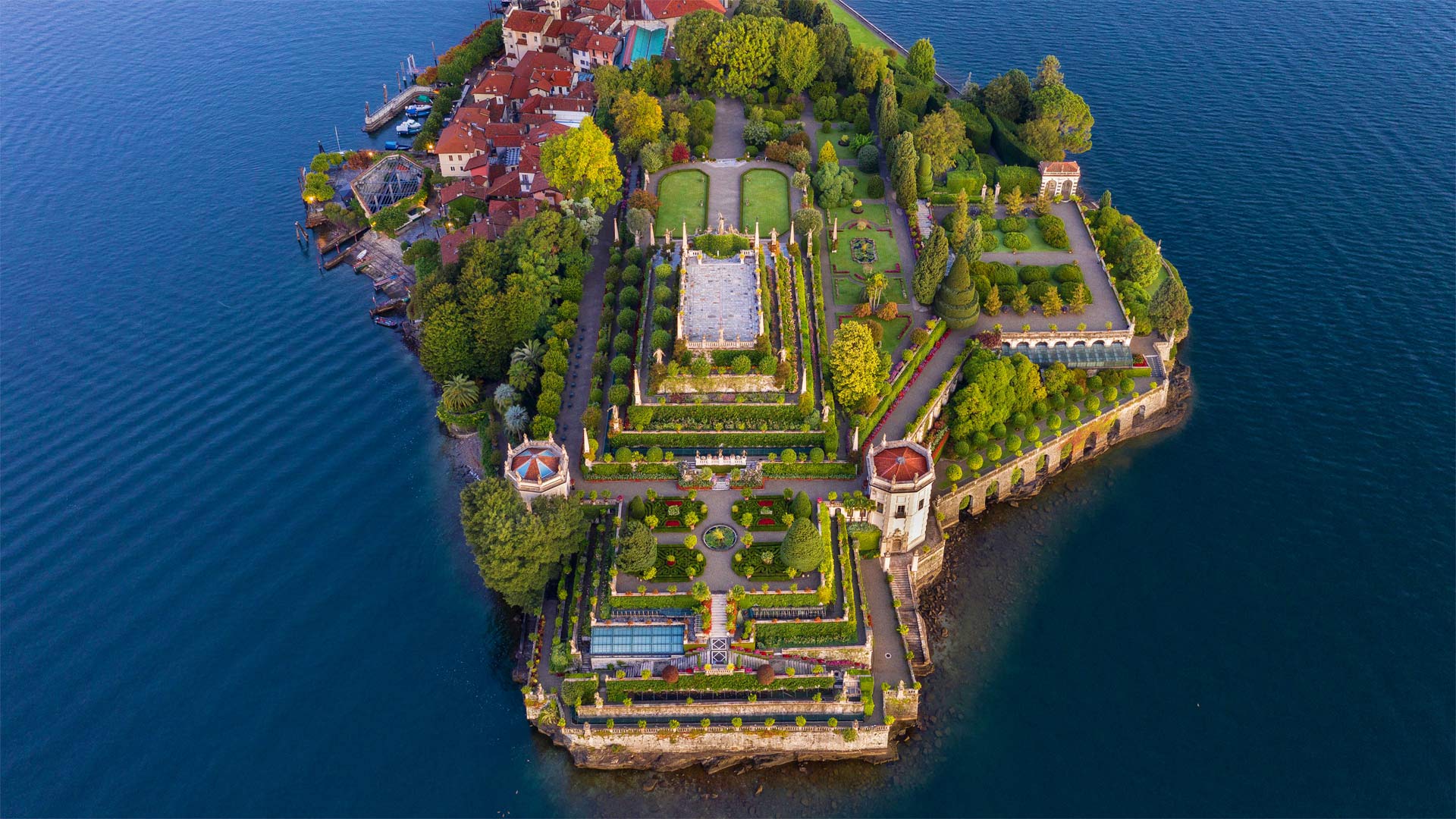
马焦雷湖畔的贝拉岛 ,意大利皮埃蒙特 Isola Bella, Lake Maggiore, Piedmont, Italy (© Massimo Ripani/eStock Photo)
Bellissima!
Isola Bella translates from Italian to English as 'Beautiful Island.' We're not going to argue with that. It certainly stands out even amid the rest of picturesque Lake Maggiore in Italy's northwestern Piedmont region. For years, the only human habitation on the island was a small fishing village. The village is still there, but in 1632, Carlo III, an Italian royal, commissioned the construction of a large palazzo (palace) on the island. The ostentatious palace includes a model Italian garden. Both are now major tourist attractions. Visitors to Stresa, the nearby town on the mainland, can book passage to Isola Bella and the other Borromean Islands for day trips or overnight stays…and our list of future travel destinations grows ever longer.
一艘游船经过时熔岩流撞击水面产生爆炸,夏威夷火山国家公园 A lava flow hits water to create an explosion as a tourist boat passes, Hawaii Volcanoes National Park (© Patrick Kelley/Getty Images)
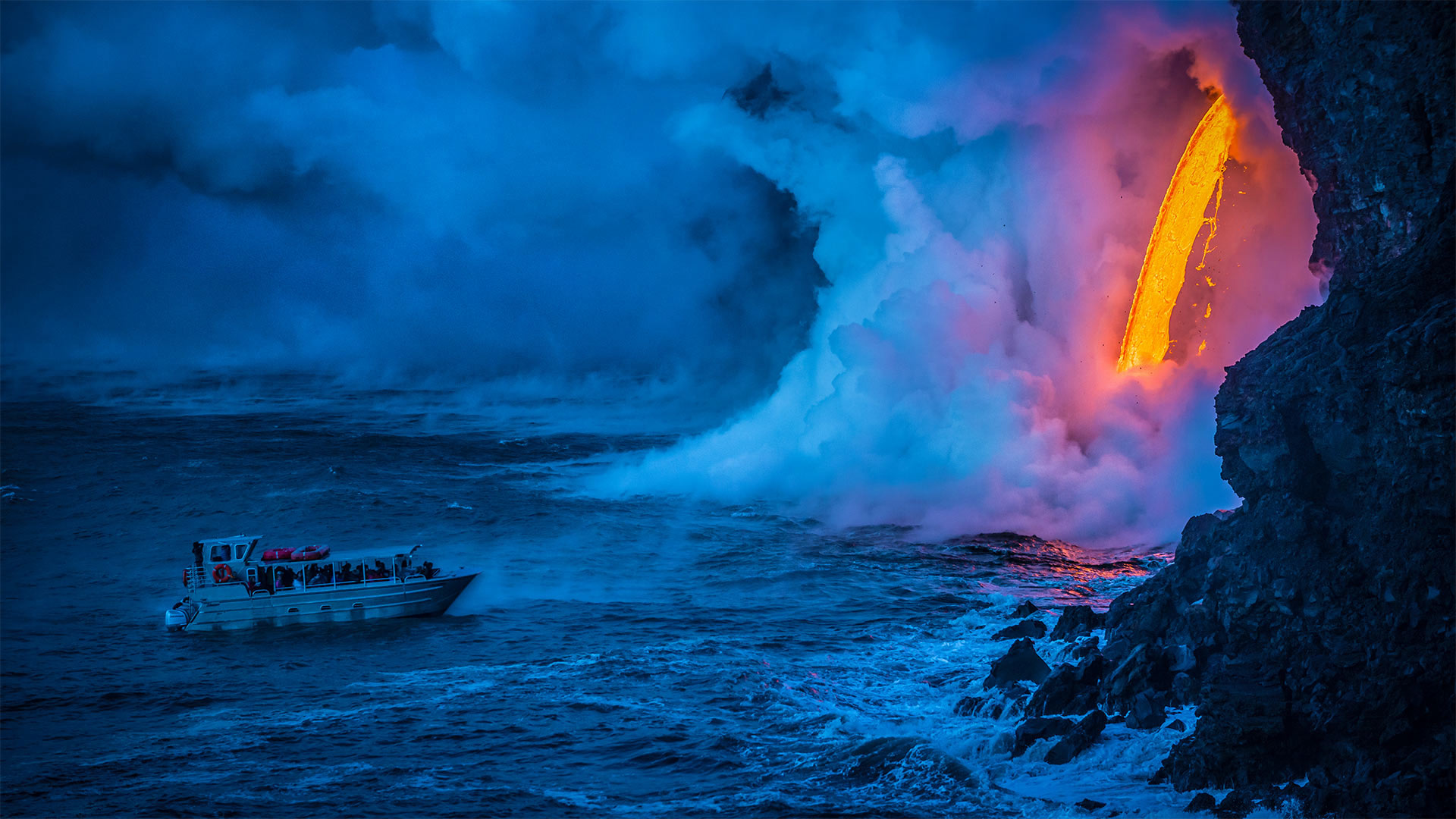
一艘游船经过时熔岩流撞击水面产生爆炸,夏威夷火山国家公园 A lava flow hits water to create an explosion as a tourist boat passes, Hawaii Volcanoes National Park (© Patrick Kelley/Getty Images)
Where fire meets water
'Keep your distance' might be the mantra for 2020, but here at Hawaii Volcanoes National Park on the 50th state's 'Big Island,' it's always been good advice. Especially so for the passengers on this tour boat as they witness a red-hot lava flow hitting the chilly ocean with a tremendous explosion of steam.
We're visiting to mark the anniversary of the park's founding on August 1, 1916. Established some 34 years before Hawaii statehood, Hawaii Volcanoes was the first national park in a US territory. It's centered around two volcanic systems: Mauna Loa, one of the world's most massive volcanoes, and the highly active Kīlauea, which erupted continually from 1983 until an explosive 2018 eruption that calmed it for the time being.
